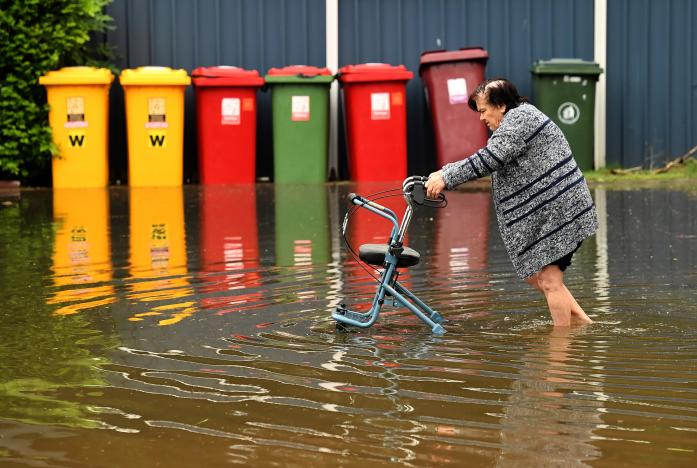(REUTERS) Flooding rivers swamped towns along Australia's east coast on Friday forcing tens of thousands of people to be evacuated as fast-flowing waters cut roads and destroyed bridges after the remnants of a powerful cyclone swept through the region.
 The disaster zone from ex-Cyclone Debbie stretched 1,000 kms (612 miles) from Queensland state's tropical resort islands and Gold Coast tourist strip to the farmlands of New South Wales state, with more than 100,00 homes reportedly without power.
The disaster zone from ex-Cyclone Debbie stretched 1,000 kms (612 miles) from Queensland state's tropical resort islands and Gold Coast tourist strip to the farmlands of New South Wales state, with more than 100,00 homes reportedly without power.
Six large rivers had hit major flood levels and were still rising, said the Bureau of Meteorology.
Flood sirens sounded before dawn at Lismore when the Wilsons River surged over the town's levee. By daybreak the center of the town of 25,000 people in the Northern Rivers region of NSW was underwater. Throughout the day several towns suffered the same fate and were submerged under floodwaters.
Stranded residents climbed onto roofs of flooded homes to await rescuing, but fast-moving water and high winds hindered emergency crews reaching some people. Farmers moved livestock to higher ground, while others sandbagged property, desperately trying to stop floodwaters.
NSW police said they had recovered the body of a woman from floodwaters on Friday, the first reported death since Cyclone Debbie hit on Tuesday. Authorities had feared that people may have died overnight as floodwaters rose swiftly in the dark.
"We've seen a lot of flood rescues here this morning," Lismore State Emergency Service Deputy Controller Amanda Vidler said while floodwaters lapped her feet in the hard-hit town. She told Reuters of one rescue where she plucked a man from rushing water on the town's main street.
"We put him in an inflatable and we got him out of there...yeah, we all got wet," she said.
Cyclone Debbie, a category four storm, one short of the most powerful level five, pounded Queensland state on Tuesday, smashing tourist resorts, bringing down power lines and shutting down coal mines, has become a huge rain depression.
Debbie will hit Australia's A$1.7 trillion ($1.3 trillion) economy, with economists estimating it will slow growth to under 2 percent in the first quarter.
In the Bowen Basin, the world's single largest source of coal used to make steel, Glencore (GLEN.L) said its mines were not damaged by the storm but restarting production depended on railways reopening.
Rail operator Aurizon (AZJ.AX) reopened one of its four railway lines and three were still closed. BHP (BHP.AX), (BLT.L) was still assessing the extent of any disruption to shipments.
Leave Comments